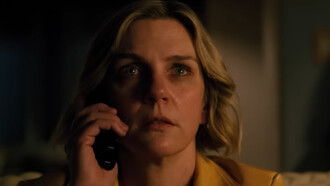In 1960, Juan-les-Pins hosted the first European Jazz Festival. Nearly 42 years earlier, from the very beginning, jazz had already come here by miracle, making Antibes the birthplace of the worldwide myth of the ‘jazz age’ and ‘Les Enfants du Jazz’.
It began like a real fairy tale in 1923, the year Louis Armstrong made his first 78-rpm recordings in Chicago with King Oliver, the first masterpieces of jazz. That year, a handsome and immensely rich young American couple settled on Cap d’Antibes, where they built a fine villa and named it ‘America’. That marks the start of the little-known but fascinating story of how, unbeknown to anyone, Antibes became a major crucible for Afro-American music, as well as modern art and culture.
In 1928, in the port of Antibes, Gerald Murphy launched his yacht (a 30-metre schooner!) and, in a sumptuous fête, christened it Weather Bird, from the title (Weather Bird Rag) of the masterpiece just barely recorded by Louis Armstrong and Earl Hines... More than seventy years later, it remains one of the top hits of jazz. To express his admiration for what will likely remain the ideal model of improvised music at the end of the next millennium, Murphy had a copy of the original record sealed in the keel of his boat! At the same time, this enlightened amateur was also a remarkable painter, whose works are as rare as they are original. The life the Murphys led between Cap d’Antibes and Juan-les-Pins was in keeping with their temperament: dazzling, but without excess. There, they invited their sporting and seafaring friends, like the writers John Dos Passos and Ernest Hemingway.
But, of course, the music hall and song provided the largest contingent of celebrities in Juan. As soon as it opened, the new casino became the main annex for the great Parisian halls: Maurice Chevalier and Mistinguett came here to live their love life. Mistinguett loved Juan, where she opened her own cabaret with a sulphurous reputation, La Cage à Poules. In 1929, Mayol inaugurated the Theatre in the Green outdoors in the heart of the Pine Grove, the ancestor of the stage for Jazz à Juan. Juan also witnessed the passage of virtually all the singing stars, some of whom stayed a while.
The best were the most assiduous: Josephine Baker, Tino Rossi, Charles Trenet, Edith Piaf, Yves Montand.
In this second season, Juan’s new casino hosted a troupe from Charleston for one evening. The Murphys were enthusiastic and decided to prolong their stay with a private fête. Scott Fitzgerald’s drunken behaviour caused a scandal and this soirée would inspire his most famous novel, Tender is the Night, while the Murphys’ life in Antibes would serve as a model for another masterpiece, Tales of the Jazz Age.
It was in the Casino of Juan and on Cap d’Antibes that the expression ‘Jazz Age’ was coined. Through the enthusiastic critics of Fitzgerald’s novels, the term began to be used in the United States to describe the ‘roaring twenties'.
The Fitzgeralds returned and settled in Villa Saint-Louis (later Hôtel Belles Rives). In 1928, Gerald Murphy left Antibes for Hollywood where the filmmaker King Vidor asked him to advise him for Hallelujah, the first film with an all-black cast devoted to their culture. This unique testimonial offers the earliest sound images of Afro-American music.
But ‘Jazz à Juan’ remained insouciant at the time. In 1927, the Blue Lagoon Orchestra stayed at L’Auberge du Pin Doré, and the Pré-Catelan was inaugurated the following year to the strains of Danny’s Jazz Band. In 1932, Juan celebrated the 250th anniversary of champagne and, for the tribute to Dom Pérignon, the new Club Maxim’s offered no less than three bands: jazz, tango, and rumba. For musicologists, this is a good indication of the most ‘successful’ dance styles favoured by the Maurice Chevalier/Mistinguett duo.
As little Claude Bolling was taking his first steps on the beach of Juan-les-Pins, the Casino invited a succession of jazz bands. In 1935, it had the Fred Ermelin orchestra, with the virtuoso Herman Chittison at the piano. That same year was the first time Juan greeted one of the geniuses of jazz, Benny Carter, accompanied by the first great French saxophone player, Alix Combelle. The following year, Eddy Foy’s big band made a sensation at the Casino, while Radio-Méditerranée set up its emitter on Plateau Saint-Jean d’Antibes. From then on, jazz would always be part of the landscape of Juan-les-Pins. In 2021 Jazz à Juan celebrated its 61th anniversary. It has become one of those legendary venues marked by the memory of jazz, but also, and most of all, by its constant renewal through new talent.















